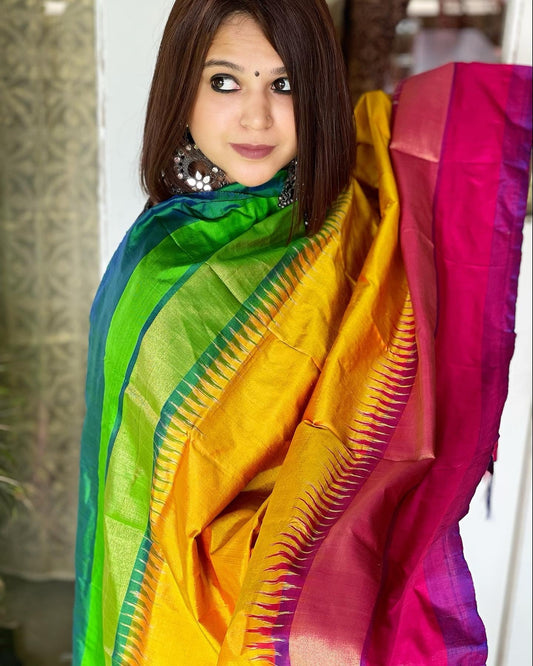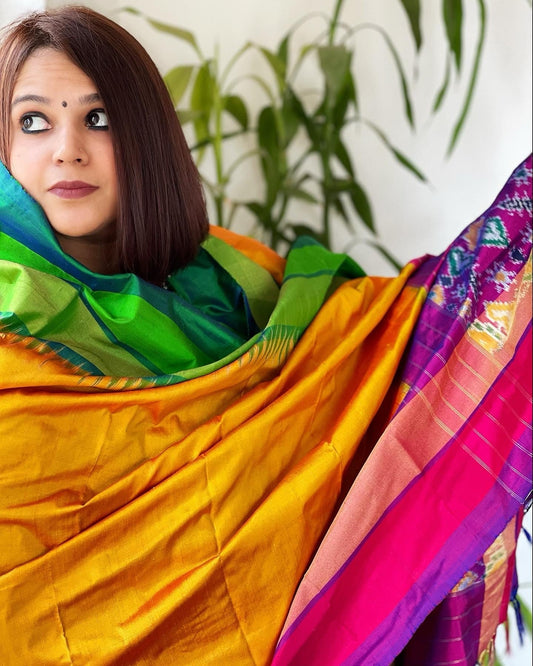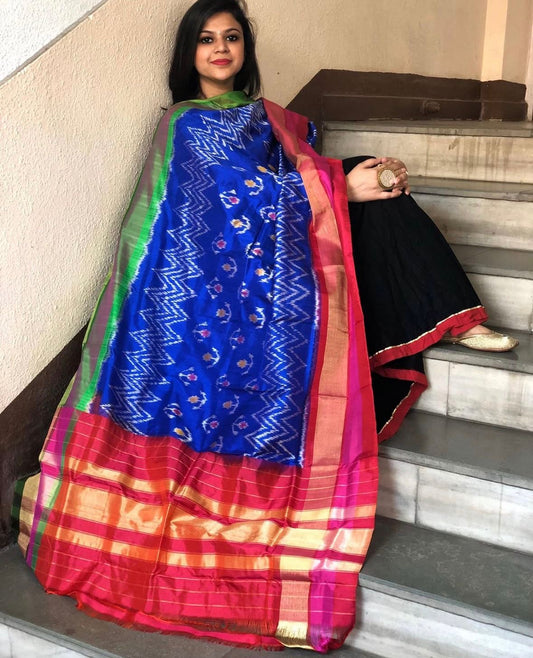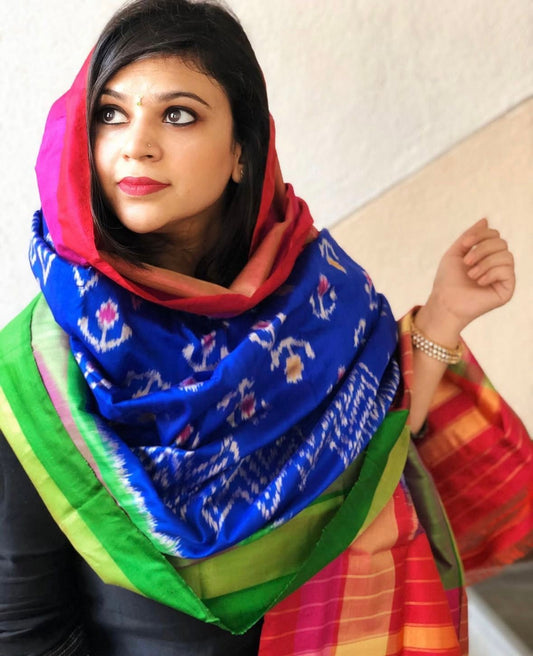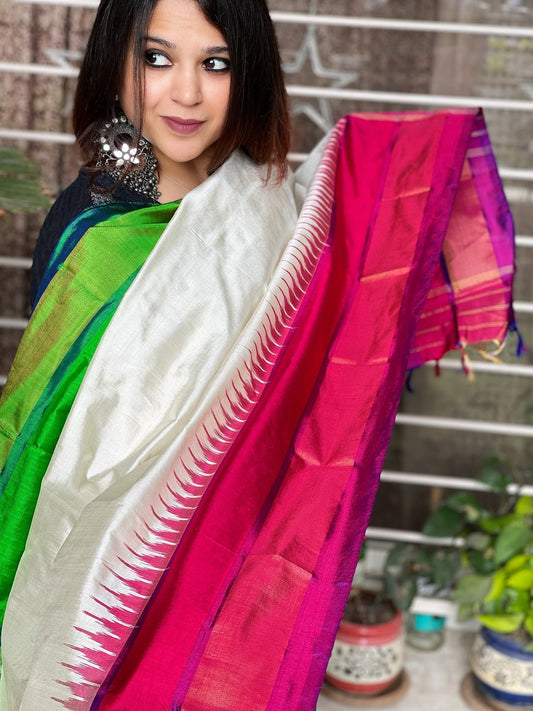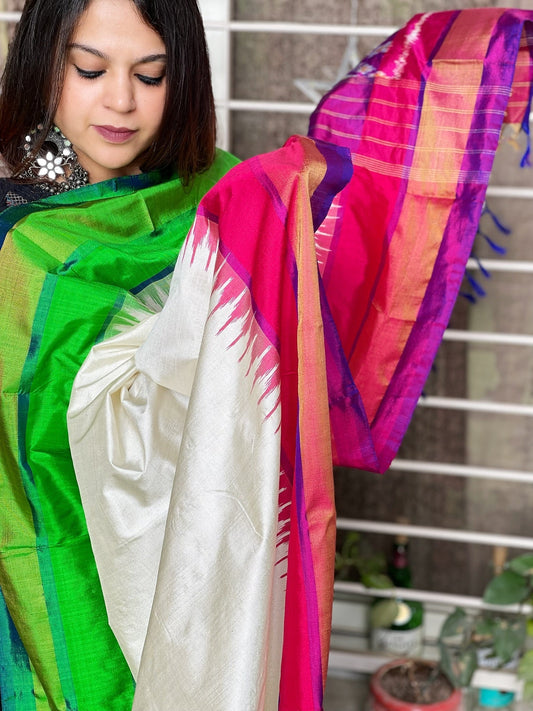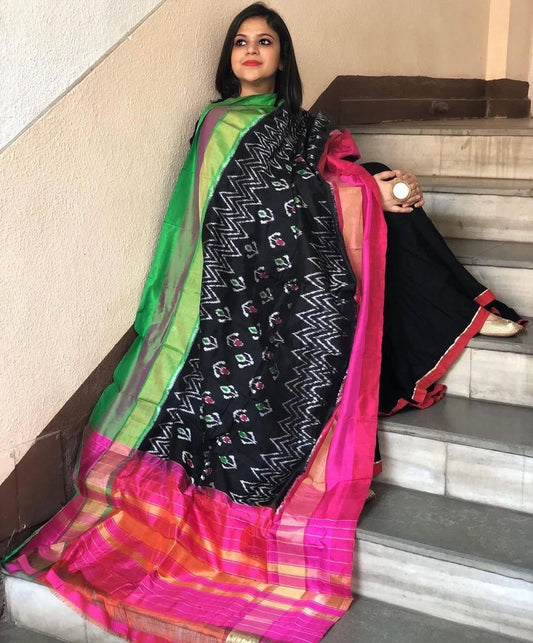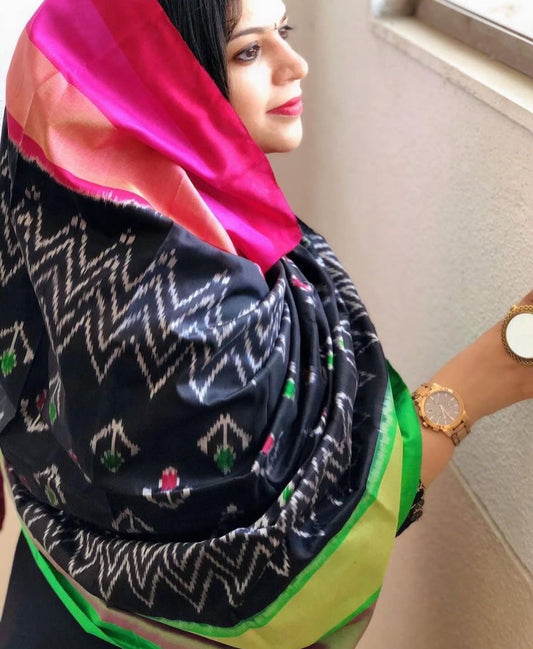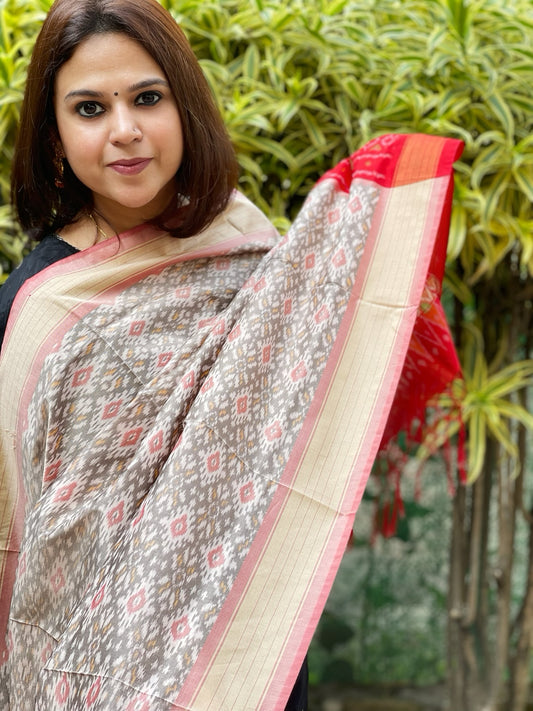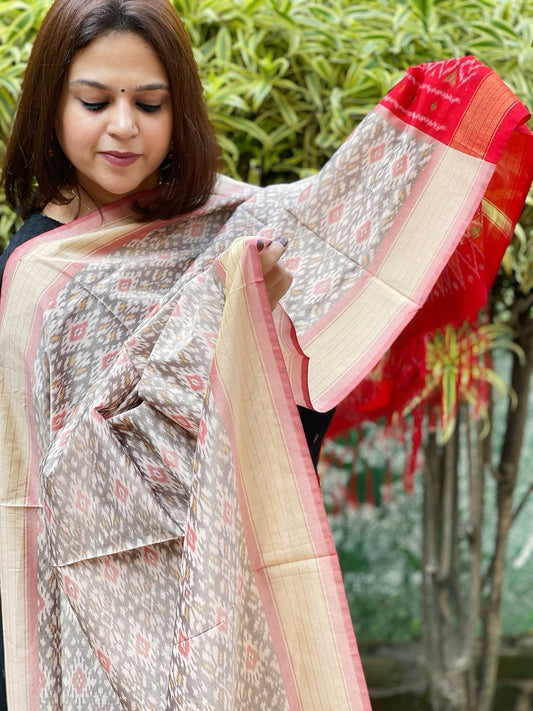A Kalamkari dupatta is a piece of art deeply rooted in Indian history and craftsmanship. It's known for its vibrant designs and the storytelling depicted through intricate patterns. But how can you tell if what you have is truly authentic? When you're getting a Kalamkari dupatta, it's important to ensure its authenticity to enjoy the true beauty and longevity of the craft.
One way to check authenticity is through its smell. Authentic Kalamkari is dyed using natural methods, which gives it a distinct earthy aroma. This scent is a hint of the organic dyes and the careful handwork involved in its creation. The colours and designs on a genuine dupatta are rich and detailed, boasting hues that stand out while feeling natural.
Beyond the appearance and smell, the texture of the fabric tells a story too. Authentic pieces have a feel that sets them apart, often soft yet firm. This texture is comfortable against the skin, a true testament to its quality. With a bit of knowledge, you can ensure your dupattas are the real deal, offering you a piece of timeless tradition in your wardrobe.
Unique Smell: The Kalamkari Aroma Test
One intriguing way to determine the authenticity of a Kalamkari dupatta is through its smell. Genuine Kalamkari textiles carry a distinct aroma, thanks to the natural dyes and traditional processes used in their creation.
Natural dyes are a significant part of Kalamkari’s identity. Ingredients like indigo, madder root, and turmeric contribute to its unique fragrance. When dyes are brewed, they release an earthy, somewhat sweet smell that lingers in the fabric. This aroma is a great indicator of authenticity. If your dupatta smells musty or chemical-like, it's possible that synthetic dyes were used, indicating it may not be genuine.
The printing process can influence the scent too. Artisans often use a wooden block to apply the dye to the fabric. This method, along with the natural drying process, enhances the natural smell of the cloth.
Here’s how you can check the aroma:
- Smell it closely: Bring the fabric close to your nose and take a deep breath. Look for natural, earthy smells.
- Compare with other fabrics: If possible, compare it to another garment known for using synthetic dyes. The difference can be quite noticeable.
- Ask the seller: If in doubt, asking about the dyeing process from the retailer might give you more insight into the fabric’s authenticity.
The aroma test can be a fun and enlightening way to experience the world of Kalamkari. It connects you to the rich history and natural elements involved in its crafting.
Colour and Design: Examining Patterns and Hues
Another crucial aspect of identifying an authentic Kalamkari dupatta lies in the colours and designs. The art of Kalamkari tells stories through elaborate patterns and natural hues that are remarkable.
Examine the Patterns: Authentic Kalamkari is known for its intricate, detailed designs. Each pattern often has cultural or historical significance, such as mythological tales or natural motifs. When checking your dupatta, look for the precision and consistency in the design. Genuine pieces display hand-painted designs that stand out for their detail.
Check the Hues: The colours should be vibrant yet natural. Authentic Kalamkari uses dyes derived from nature, resulting in colours that are rich but not overly bright. Look for depth in colours like deep reds, blues, and earthy tones. If the hues appear too shiny or neon-like, it may be a sign of synthetic dyes.
Look for Irregularities: Since traditional Kalamkari is hand-dyed, slight irregularities in patterns and colour can appear. These imperfections are part of the charm and indicate a handmade piece. Perfectly uniform prints suggest machine-made work, which often lacks the character of authentic Kalamkari.
Test by Time: Over time, genuine natural dyes tend to age beautifully, maintaining integrity and fading gracefully. If possible, observe how well an older Kalamkari dupatta holds its colour compared to a new synthetic one.
By observing these features, you connect not just with the garment itself but with the art and dedication behind its creation. Detailed patterns and natural hues are signs of a true Kalamkari masterpiece, distinguishing it from imitations.
Fabric Feel: The Touch Test for Authenticity
Feeling the fabric of a Kalamkari dupatta can reveal a lot about its authenticity. The touch test is a simple yet effective way to distinguish genuine Kalamkari from its counterparts.
Authentic Kalamkari fabric is made from natural materials like cotton or silk, which provide a unique texture. Cotton feels soft and breathable, while silk offers a smooth, luxurious surface. When you hold a true Kalamkari dupatta, you’ll notice the fabric is lightweight yet firm. It drapes well, adding an elegant flow when you move.
Running your fingers over the fabric should give a sense of the handiwork involved. The hand-painted or block-printed designs create a slight texture on the surface. This tactile difference stands out compared to machine-made fabrics that feel too smooth or feature perfectly uniform patterns.
Here’s a quick guide for the touch test:
- Pinch Test: Gently pinch a small section of the fabric. Authentic cotton or silk will spring back and not easily crease.
- Feel the Weight: The dupatta should feel substantial but not heavy. This helps it fall gracefully over your shoulders.
- Check for Comfort: The fabric should feel comfortable against the skin, indicative of the breathable nature of the natural dyes and fibres used.
By trusting your sense of touch, you can appreciate the effort and skill poured into making a real Kalamkari piece.
Water Test: Checking Colour Fastness
The water test is a handy method to check if a Kalamkari dupatta is dyed with natural colours. Authentic Kalamkari uses natural dyes that tend to have good colour fastness, meaning the colours stay put and don’t bleed easily.
Prepare for the Test: Take a small, hidden section of the dupatta and dampen it with water. Make sure it’s a part that won’t be missed if not visible, like inside a fold or hem.
Apply Water: Use a damp cloth or a few drops of water for this. Gently press the damp cloth against the fabric and hold for a few seconds.
Observe the Result: After removing the cloth, check it for any colour transfer. Natural dyes shouldn’t leave significant marks. If there’s a lot of colour on the cloth, it might indicate synthetic dyes.
Dry Naturally: Allow the wet spot to air dry. Authentic dyes should maintain their hue and not appear faded once dry.
While this simple test helps confirm the use of natural dyes, it also offers peace of mind about the durability and care of the fabric. Regular checks like these can ensure your Kalamkari dupatta remains as vibrant as the day you bought it.
Conclusion
Unveiling the authenticity of a Kalamkari dupatta can be an enlightening journey. From the distinct aroma associated with natural dyes to the vibrant and meaningful patterns, each step offers insight into this rich art form. Feeling the fabric further connects us to the artisans’ touch, while practical tests like the water test affirm our cherished piece’s authenticity. The colours, designs, and even the touch remind us of the depth and tradition that Kalamkari represents. Understanding these aspects not only enhances our appreciation but also ensures that we invest in genuine craftsmanship.
Discover the beauty and authenticity of hand-crafted Indian dupattas with Masakalee. Explore our collection to experience the artistry and tradition inherent in each piece. Invest in real Kalamkari silk dupattas today, and let its beauty and story become a part of your wardrobe.



